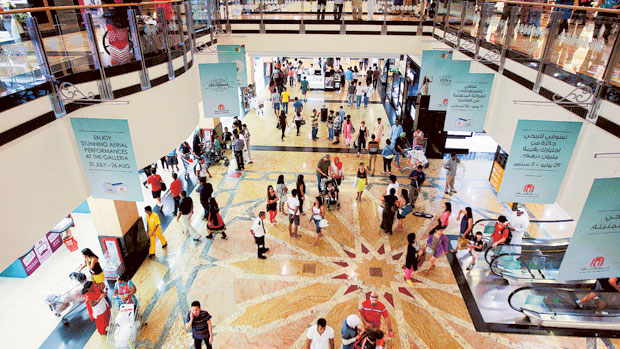
DUBAI: Retailers in the region seem to have hit the sweet spot in juggling the competing forces of brick-and-mortar and online selling. Within this sweet spot, there is enough happening that will ensure physical retailing continues to dominate while, at the same, freeing up space for e-tailing to grow.
“Statistics indicate that 65 per cent of all purchases [have] purchasers in the GCC first look online at the product selection, pricing and availability,” said David Macadam, CEO and Vice-Chairman at the International Council of Shopping Centres and the Middle East Council of Shopping Centres. “Over 80 per cent of purchases in the region are still conducted in-person within shopping centres and high-street retail environments.
“Brick-and-mortar retailers in the region now have substantial focus on web-based retail. When you review the number of retailers who now have very interactive websites and also some of the most sophisticated retail shops, you will see that omni-retail is very much alive — and well — in the GCC.”
That has been the catalyst for the bigger retailing entities to throw down markers for what they intend to do in the virtual space. The Landmark Group is reportedly making quite some headway with its online presence through www.landmarkshops.com, while just recently the Emke Group picked up stakes — through a $60 million deal (Dh220 million) — in UK’s East India Co, a speciality trading firm. “Apart from helping us get into luxury retailing, something we have not had before, this would help us with a presence on online selling, an area that we are keen to make a mark in,” said a spokesperson at Emke.
But more retailing groups need to come in. Even now, despite the obvious benefits, there is still a reluctance on creating multiple selling fronts. One concern they have is that they might lose some of their edge in physical selling.
But Macadam sounds a cautionary note on sticking with a one strategy fits all mindset. “Retailers who keep current with trends and lead the way to enable shoppers to seek the best in the easiest and most efficient format win customer loyalty, maximise purchases and win repeat purchasers,” he added. “Attracting customers through online methods and in-store service (will) win the largest market share and will continue to do so.”
That is the incentive for local mall developers to build more capacity into the system, even the mammoth proportions — 8 million square feet of built-up area — that Mall of the World will deposit once its ready.
“When shopping centres add on to existing structures of their retail environments, this expansion is created for many reasons which are likely to be sound financial investments,” said Macadam. “For example, Mall of the Emirates is adding to the existing retail area because the long list of retailers seeking entry into the market continues to grow.
“Retailers understand Mall of the Emirates has some of the highest trading to sales densities in the world. Currently ranked as one of the Top 10 successfully trading malls in the world, Mall of the Emirates will rapidly recover the financial investment made on the expansion.
“Clearly, the existing retail shopping centre entities are capable of dealing with expansion of the retail footprint, particularly in the UAE.”











